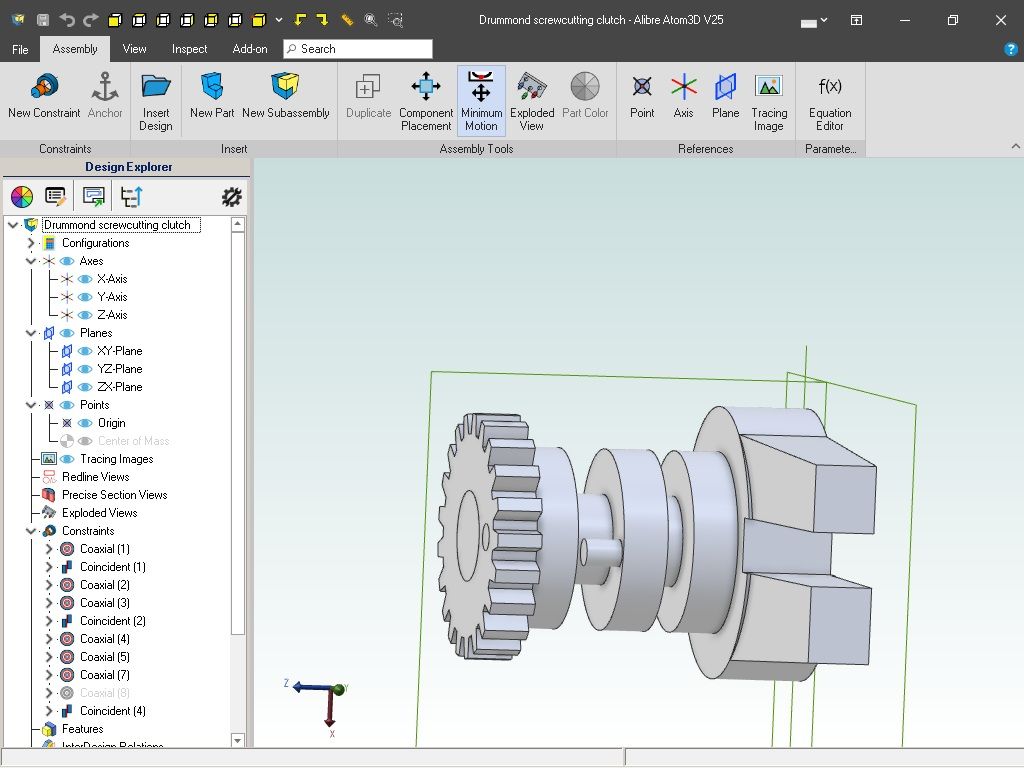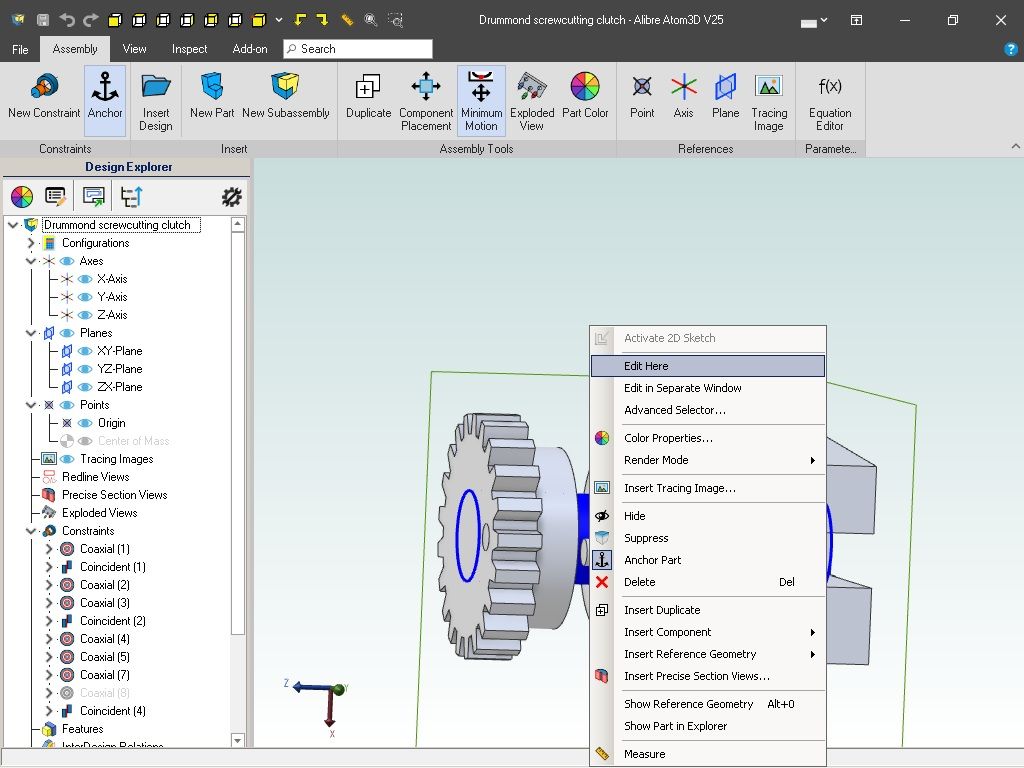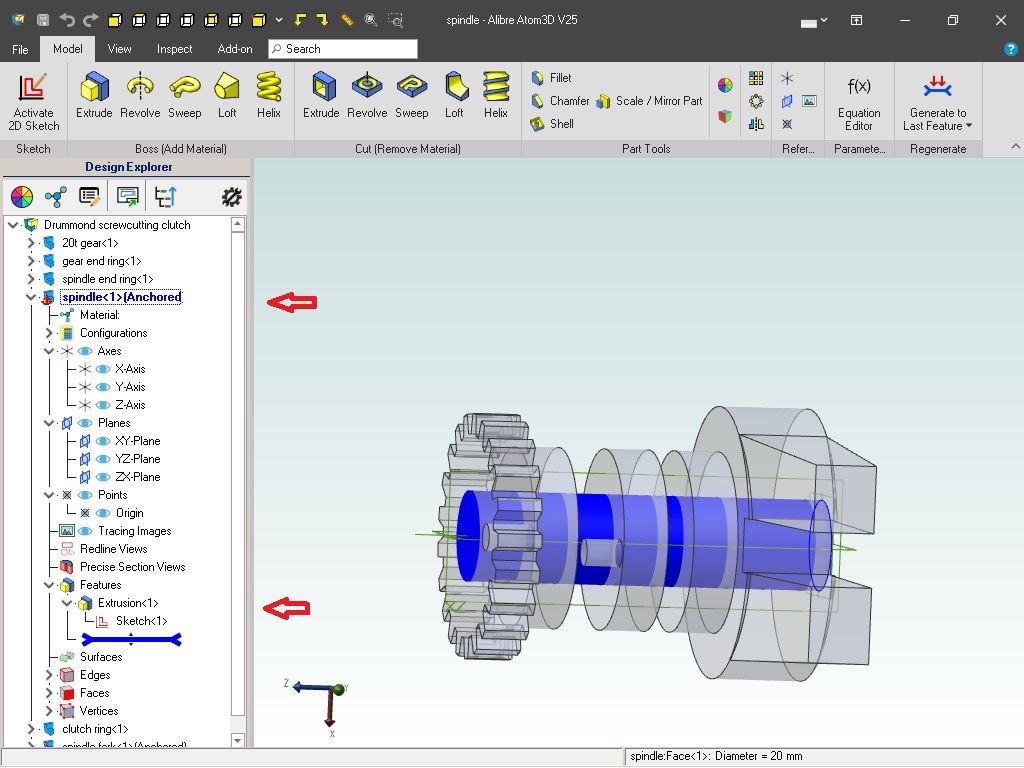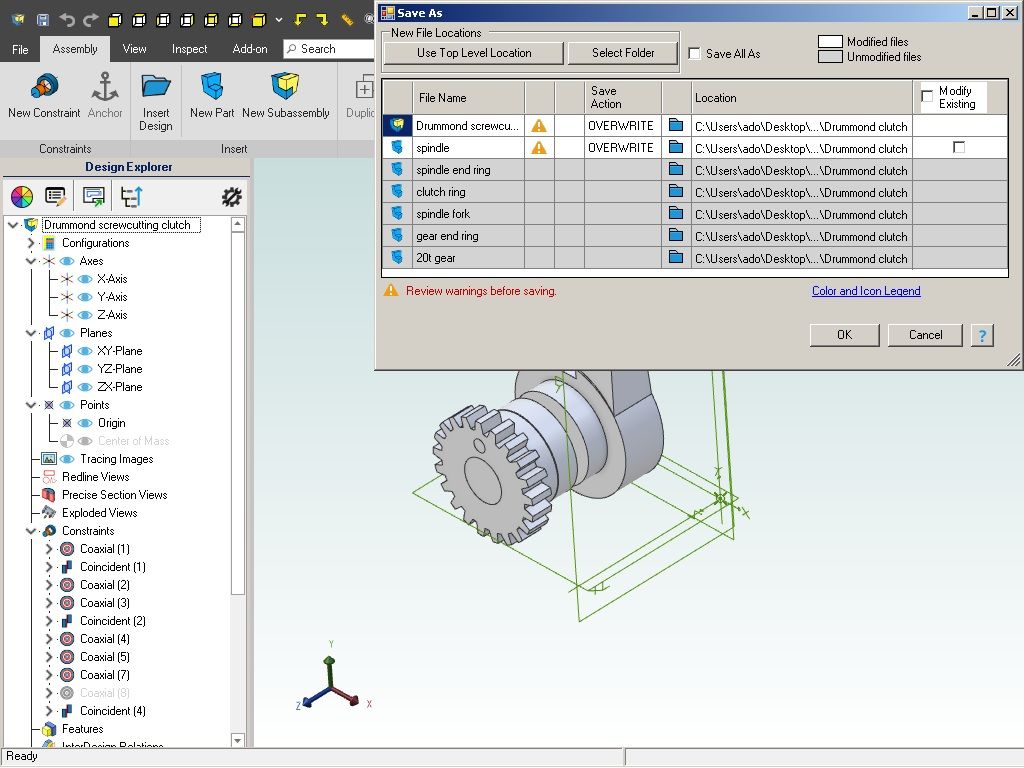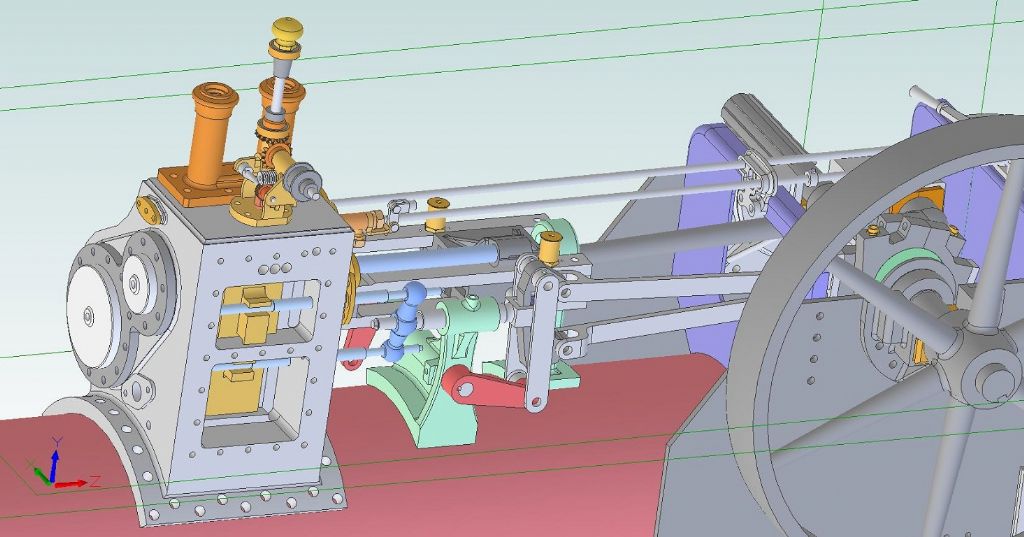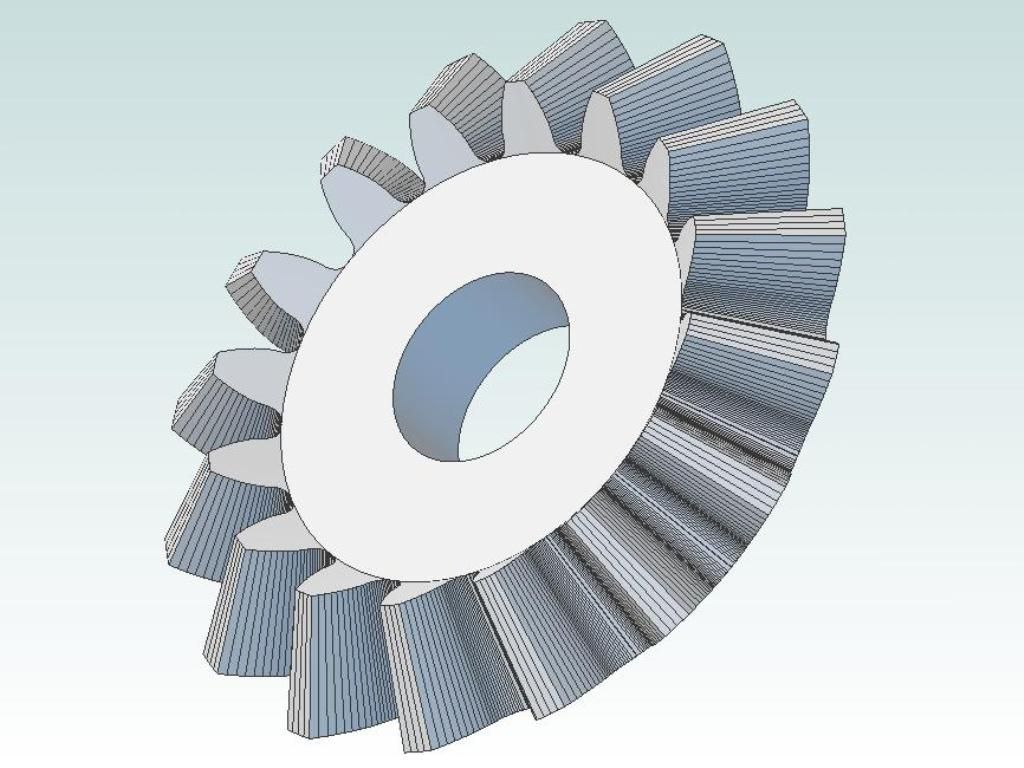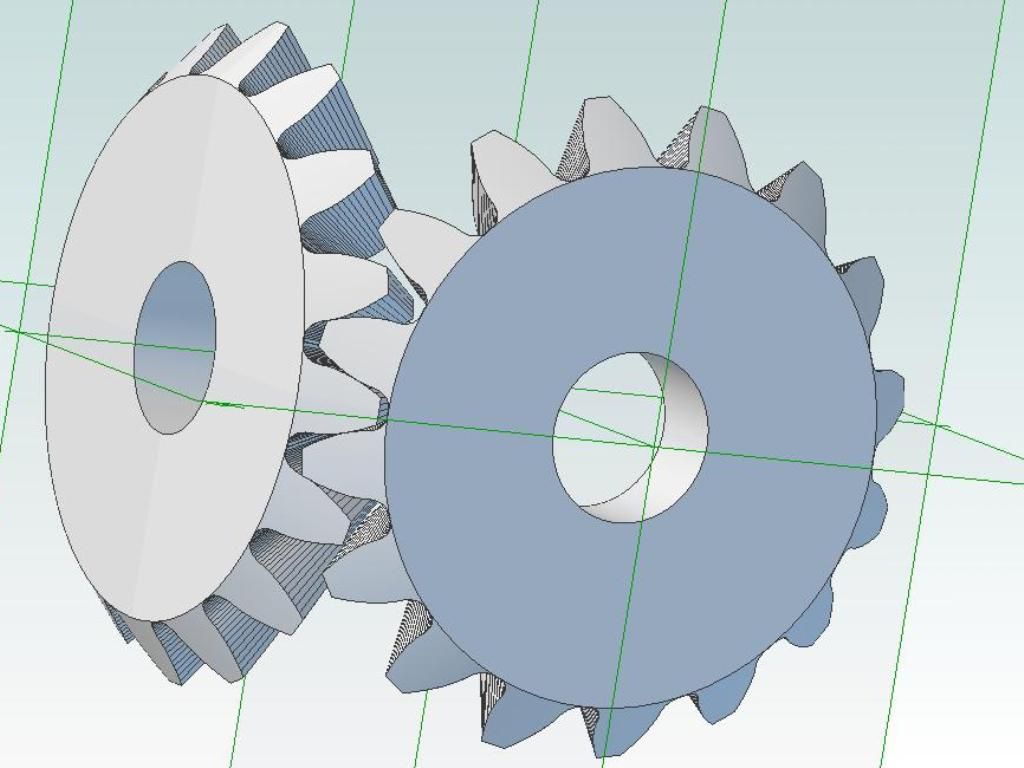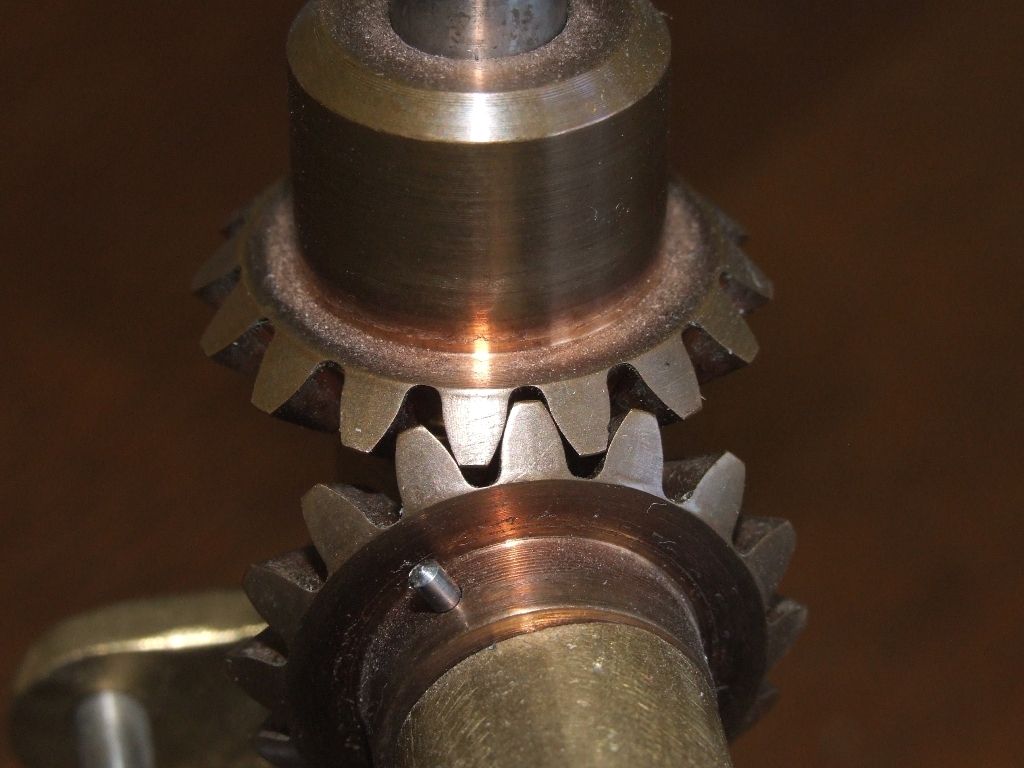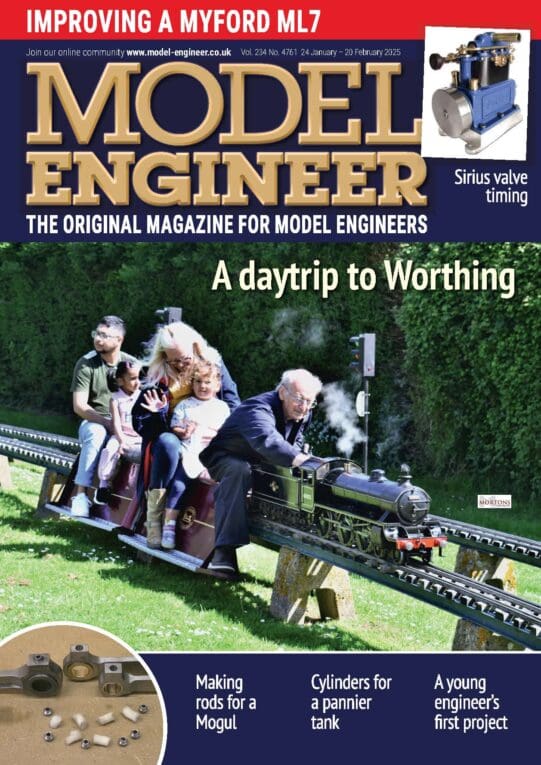Thankyou.
It's actually simpler than the tutorials on the Atom Alibre web-site! Although based on investigating how to drive a small milling-machine needing a 20:1 speed reduction from motor to spindle; as a CAD exercise it should be basic. I omitted difficulties like the end-collars' grub-screws, and the operating-handle. I could have used parts from published drawings, to practice with, but they are no simpler.
As an engineering exercise it proved interesting: I have used lathes with back-gears for many years but never really quite knew how they work!
As a CAD assembly though, that drawing is merely four pairs of cylinders strung on one long cylinder.
The eccentrics are the only complicated part. I did not deliberately remove the ring of pin holes in the larger gear. They vanished when I did something else to it.
Drawing the accompanying drive-shaft with fast-and-loose gear and pulleys would be far, far harder; the complete gear-frame, beyond me. My practical approach would be to make the moving parts then work out how to build a frame to hold and connect them.
It would be impossible to draw the entire system, motor and all. I would not even think about trying it, even with the milling-machine reduced to a symbolic rectangular frame holding the spindle with its pulley. (The machine, made for line-shaft drive, has the spindle inside an open, one-piece cast-iron frame whose top member holds the single over-arm.)
.
I realised where I'd gone wrong with the shaft length. I had miscalculated the length of the stack of parts initially when I drew the shaft. Later, I found that "Measure" tool to discover the real length; but then mis-quoted that in turn in re-drawing the shaft. I tried to find how to edit its length but found only how to change its diameter.
.
Ady –
I was saving the drawing as I went along, so as not to lose everything.
The only way to post a CAD drawing here is as a jpg file, so naturally not holding the information you mention.
I know it's possible to copy an image of the screen, which may be what you mean, but I have never been clear how to do that. It's not obvious where you even find the command.
David Jupp.



